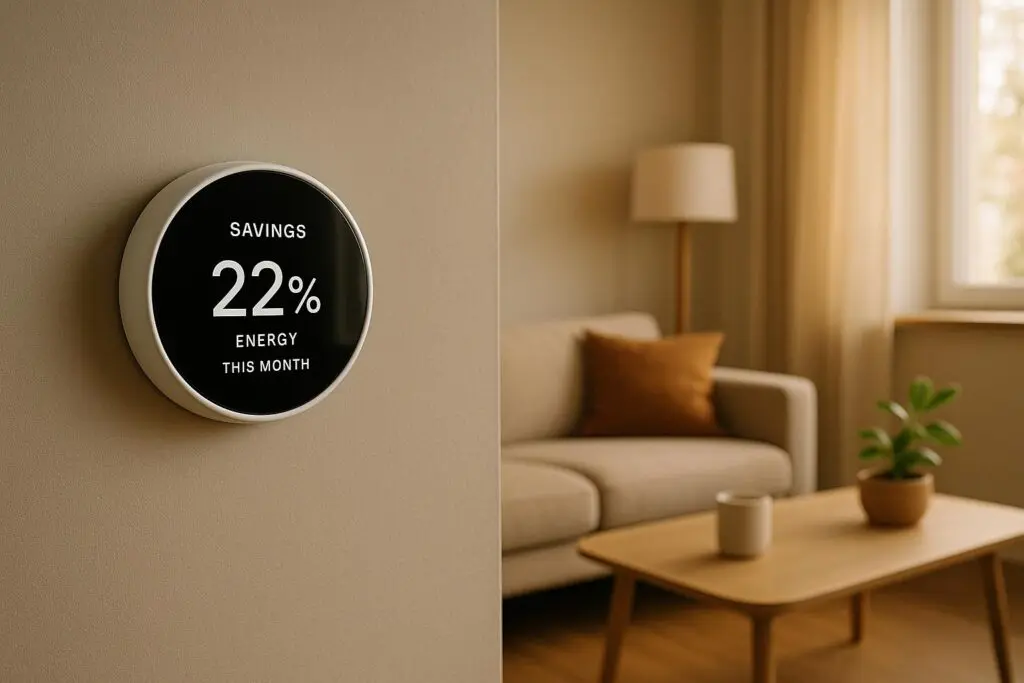When choosing between a heat pump and a furnace, the right option depends on your climate, budget, and home setup. Heat pumps transfer heat and work well in mild climates, offering both heating and cooling. Furnaces, which generate heat, are better suited for colder regions with harsh winters. Here’s a quick breakdown:
- Heat Pumps: Use electricity, are highly efficient in moderate climates, and provide year-round heating and cooling. They cost more upfront ($4,000–$8,000) but can lower monthly energy bills in mild winters.
- Furnaces: Use gas, oil, or electricity, and perform consistently in extreme cold. Installation costs are lower ($3,000–$6,500), but operating costs vary based on fuel prices.
Quick Comparison:
| Feature | Heat Pumps | Furnaces |
|---|---|---|
| Energy Source | Electricity | Gas, oil, or electricity |
| Efficiency | 2–4x more heat per kWh | Up to 98.5% (gas models) |
| Climate Fit | Best for mild/moderate climates | Best for cold climates |
| Upfront Cost | $4,000–$8,000 | $3,000–$6,500 |
| Monthly Costs | Lower in mild winters | Stable in cold winters |
| Lifespan | 10–15 years | 15–20 years |
Heat pumps are ideal if you need both heating and cooling or live in a milder climate. Furnaces are better for colder regions or homes with existing gas lines. Dual-fuel systems offer a mix of both for unpredictable climates.
Furnace vs. Heat Pump… or both?! Know BEFORE you buy🔥🤯
How Heat Pumps and Furnaces Work
To understand how heat pumps and furnaces differ in performance, it helps to dive into how each system operates. They take distinctly different approaches to keeping your home warm.
Heat Pump Operation
Heat pumps don’t create heat; they move it. During winter, they extract heat from the outdoor air and transfer it inside your home. This process relies on a refrigerant that circulates through coils, absorbing heat outside and releasing it indoors.
In summer, heat pumps switch gears to cool your home. They work like an air conditioner, pulling heat from inside your house and releasing it outdoors.
The outdoor unit houses a compressor and coils that handle the heat exchange process. Even in cold weather, modern heat pumps can extract heat from the air, though they tend to lose efficiency as temperatures drop. Since they run on electricity and use the refrigeration cycle, they’re particularly effective in moderate climates. Inside, a blower fan distributes the conditioned air through your ductwork.
Furnace Operation
Furnaces, on the other hand, generate heat through combustion or electric resistance. Most furnaces burn fuel to produce warmth.
"A furnace works by heating air through combustion or electricity", explains Bryant, a major HVAC manufacturer.
When your home needs heat, gas or oil furnaces ignite fuel to warm a heat exchanger. A blower fan then pushes the heated air through your duct system. Electric furnaces operate differently; they use heating elements or coils that warm up as electricity flows through them, directly heating the air that passes over these components.
Furnaces can run on natural gas, propane, oil, or electricity. Unlike heat pumps, furnaces are dedicated heating systems, so you’ll need a separate air conditioner for cooling. Gas and oil furnaces also require venting systems to safely release combustion byproducts, while electric furnaces do not produce any gases.
The fundamental difference boils down to this: heat pumps transfer heat from one place to another, whereas furnaces create heat through combustion or electrical resistance.
Energy Efficiency Comparison
When it comes to energy efficiency, heat pumps and furnaces operate on entirely different principles, which directly impacts their energy use and overall cost of operation. Let’s break it down.
Efficiency Ratings
Heat pumps measure efficiency using the Coefficient of Performance (COP), which reflects how much heat they produce compared to the electricity they consume. In ideal conditions, modern heat pumps can achieve a COP of up to 4. This means for every unit of electricity they use, they can deliver up to 4 units of heat – a significant efficiency advantage in the right environment.
Furnaces, on the other hand, use the Annual Fuel Utilization Efficiency (AFUE) rating. This percentage indicates how much of the fuel is converted into usable heat. Unlike heat pumps, which transfer heat from the air, furnaces generate heat directly through combustion or electric resistance. While this method can’t match the efficiency of a heat pump in mild conditions, it offers reliable performance in colder climates.
Climate Effects on Performance
The effectiveness of each system largely depends on the climate. Heat pumps excel in moderate climates where there’s sufficient ambient heat to transfer. However, their efficiency tends to drop in extreme cold. That said, advancements in cold-climate heat pump technology have made them more reliable at lower temperatures.
Furnaces, by contrast, are unaffected by outdoor temperatures. Because they generate heat through combustion, their output remains stable, making them a dependable choice for regions with harsh winters.
Utility Bill Implications
In very cold climates, the consistent heat output of furnaces can make them a practical and predictable option for managing utility costs. But in areas with milder winters, heat pumps often offer a cost advantage by reducing energy consumption. The actual savings depend on factors like local energy prices, the quality of installation, and the specific climate where the system is used.
Installation and Operating Costs
When considering heating systems, it’s important to think beyond just the purchase price. Factoring in both installation and ongoing costs can help you choose a system that aligns with your budget and long-term financial plans.
Upfront Installation Costs
Installing a heat pump typically costs between $4,000 and $8,000, depending on factors like the system’s size, efficiency, and whether your home needs ductwork upgrades. If significant electrical work or new ducting is required, expect those costs to climb.
Furnace installations are generally less expensive upfront, ranging from $3,000 to $6,500. Gas furnaces tend to be on the lower end of this range, while high-efficiency models with advanced features push costs higher. Electric furnaces are often cheaper to install but come with higher operating costs, especially in areas where electricity rates are steep.
The complexity of the installation plays a big role in the final price. Heat pumps require both indoor and outdoor units, along with electrical connections that may need upgrading to handle the system’s power demands. Furnaces, on the other hand, need proper venting and gas line connections for gas models, but the overall process is usually simpler.
Monthly Operating Costs
Your monthly heating bill depends on local utility rates and the climate where you live. For heat pumps, operating costs can range from $40 to $120 in mild winters. However, in colder climates, when temperatures consistently drop below 25°F to 30°F, backup electric heating often kicks in, which can double or even triple these costs.
Gas furnaces, benefiting from relatively stable natural gas prices, typically cost $50 to $150 per month during the peak winter season. Meanwhile, electric furnaces are more expensive to run in colder months, with costs ranging from $100 to $300, depending on your home’s size and local electricity rates.
Rebates and Tax Credits
Incentives can make a big difference in the overall cost of heating systems. For example, the federal tax credit for heat pumps offers up to $2,000 for qualifying Energy Star-certified models. Furnaces may also qualify for smaller tax credits, depending on their efficiency ratings.
Utility companies often provide rebates for upgrading to high-efficiency systems. These rebates typically fall between $500 and $1,500, but the exact amount depends on your location and utility provider. Some regions even offer extra incentives for replacing older, less efficient systems with newer, energy-saving technology.
Maintenance Costs
Don’t forget to account for maintenance costs when calculating long-term expenses. Heat pumps usually require $150 to $300 annually for routine upkeep, such as filter replacements and inspections. Furnace maintenance is slightly less, typically ranging from $100 to $250 per year, though gas furnaces might need more frequent safety checks.
If you’re worried about unexpected repairs, extended warranty programs and maintenance plans can help. These plans generally cost $200 to $500 per year and provide peace of mind by covering routine maintenance and potential repairs over the life of the system.
All these financial factors provide a clearer picture of how each system performs over its lifespan, especially in different climates.
sbb-itb-b5c10b1
Climate Fit and System Lifespan
Your local climate plays a major role in determining the efficiency and durability of heating systems. Weather patterns can directly influence how well a system performs and how long it lasts, making it essential to choose a system that aligns with your region’s conditions. Here’s a closer look at how different systems hold up in various climates and over time.
Best Climate for Each System
Heat pumps shine in areas with moderate climates. In these regions, they can efficiently provide heating throughout the season without needing much additional support. However, in colder climates where temperatures plunge, furnaces often prove to be the better option, offering consistent and reliable warmth even during harsh winters.
Expected Lifespan
The environment where your heating system operates can significantly impact how long it lasts. Heat pumps, which run year-round for both heating and cooling, may have a shorter lifespan compared to furnaces, which typically operate only during colder months. Factors like coastal exposure or heavy use in extreme winter conditions can also wear down components more quickly. It’s important to consider these variables when planning for eventual replacement.
Backup Heating Needs
In extreme cold, when heat pump efficiency drops, having a backup heating source becomes crucial. Many heat pumps are designed with auxiliary heating options, such as electric heating elements or dual-fuel systems, to ensure consistent warmth. Some systems automatically switch to a backup furnace mode during particularly frigid conditions, while others feature an emergency heat mode to step in if the primary system struggles or fails. Understanding the role of backup heating – and how it might affect your energy use – is essential for evaluating the overall performance and cost of your heating system.
Heat Pumps vs. Furnaces: Side-by-Side Comparison
When deciding on a heating system, understanding the differences between heat pumps and furnaces can help pinpoint the best option for your home. Heat pumps work by transferring heat, offering year-round heating and cooling, while furnaces focus solely on generating heat for colder months. These distinctions directly impact energy efficiency and operating costs. Here’s a closer look at how they compare.
"From a strictly scientific basis, highly efficient heat pumps are technically more energy efficient in that they can transfer more energy than they use." – Brooke Greenwood, Director of Residential Product Management, Carrier
"High efficiency heat pumps in warmer climates typically use less source energy on average compared to gas furnaces. In colder climates, 95% efficient gas furnaces fare better than ENERGY STAR® heat pumps."
Comparison Chart
| Feature | Heat Pumps | Furnaces |
|---|---|---|
| Energy Source | Electricity | Natural gas, propane, oil, or electricity |
| Operation | Transfers heat (heating & cooling) | Generates heat (heating only) |
| Efficiency | Delivers 2–4× more heat energy than consumed electricity | Up to 98.5% efficient |
| Climate Performance | Best in mild to moderate climates; efficiency drops in extreme cold | Consistently effective in very cold climates |
| Annual Operating Costs | Generally results in lower utility bills due to high efficiency | Can incur higher ongoing fuel expenses |
| Efficiency Ratings | HSPF2 (heating) and SEER2 (cooling) | AFUE for fuel-based systems |
| Dual Functionality | Provides both heating and cooling | Heating only |
The efficiency of heat pumps stands out when looking at energy usage. For instance, a heat pump with a 10.3 HSPF rating produces 10,300 BTUs of heat for every kilowatt-hour of electricity consumed. In comparison, electric resistance heating generates only about 3,400 BTUs per kWh. This efficiency translates into noticeable savings. For example, cold-climate heat pumps can save around 3,000 kWh annually, which is about $459 at an electricity rate of $0.153 per kWh.
For homes relying on oil heating, switching to heat pumps can lead to even greater savings. On average, they reduce energy consumption by about 6,200 kWh each year, saving roughly $948 compared to oil systems. These figures highlight how your climate and energy priorities can influence your decision.
Which System Is Right for You
Deciding between a heat pump and a furnace comes down to a few key factors: climate, energy efficiency, and cost. Let’s break it down to help you make the best choice for your home.
Climate matters. If you live in a region where winter temperatures rarely dip below 25°F, a heat pump is likely your best bet. These systems are designed to perform well in milder climates, providing both heating and cooling efficiently throughout the year. On the other hand, if you’re in an area with harsh winters and extended periods of freezing temperatures, a furnace will deliver more reliable performance.
For those in areas with unpredictable or borderline climates, modern cold-climate heat pumps have made significant strides. These systems now function effectively even in temperatures well below freezing. This advancement means homeowners in regions traditionally dominated by furnaces now have viable heat pump options, particularly when combined with a backup heating system.
Heat pumps are known for their efficiency in moderate weather but tend to lose efficiency as temperatures drop. In contrast, high-efficiency furnaces maintain steady performance regardless of the weather. Natural gas models, for example, can achieve up to 98.5% AFUE ratings, offering consistent and reliable heating.
Your current home setup also plays a role. If your home already has natural gas service and ductwork, installing a furnace is generally more affordable upfront. However, if your home lacks gas lines or you need both heating and cooling, a heat pump might be the more economical choice. Heat pumps eliminate the need for separate systems, which can simplify installation and reduce overall costs.
For those in borderline climates, dual-fuel systems provide a compelling option. This setup combines the efficiency of a heat pump with the reliability of a furnace during extreme cold. The system automatically switches between the two, using the heat pump as the primary source and the furnace as backup when temperatures drop too low for the heat pump to operate efficiently. While dual-fuel systems require a higher initial investment, they offer year-round efficiency and dependable heating during the coldest months.
Regional trends also highlight some interesting patterns. In warmer climates, about 60% of homes still use furnaces, while only 15%–25% rely on heat pumps. This reflects the importance of tailoring your choice to your specific climate and home needs.
Finally, consider both installation and operating costs. While heat pumps may have a higher upfront price, their energy efficiency can lead to lower monthly bills, especially in moderate climates. Balancing these factors will help you determine the most cost-effective and practical solution for your home.
FAQs
How can I figure out if a heat pump or furnace is more cost-effective for my home and climate?
When deciding which heating option makes the most sense for your budget, start by thinking about your local climate and how much heating your home typically requires. Heat pumps tend to work best in areas with milder winters, while furnaces are often the go-to choice in regions with extremely cold temperatures.
Next, take a close look at the upfront costs and long-term expenses for each system. Heat pumps might be more expensive to install initially, but they could save you money on energy bills over time – especially if electricity rates in your area are favorable compared to gas prices. Also, be sure to explore any rebates or incentives that could help lower installation costs.
Finally, consider how energy-efficient your home is. Proper insulation can make a big difference, ensuring whichever system you choose runs more efficiently and ultimately saves you money down the line.
What should I consider when choosing between a heat pump and a furnace for my home with existing ductwork?
When choosing between a heat pump and a furnace, several factors come into play: climate, energy efficiency, upfront costs, and maintenance requirements. Heat pumps work best in milder climates since they can handle both heating and cooling efficiently. On the other hand, furnaces are better suited for colder areas where more robust heating is necessary.
Your energy priorities matter, too. Heat pumps are generally more energy-efficient, which could lead to lower utility bills over time. However, they often come with higher installation costs. Furnaces usually have a lower initial price tag but may use more energy, especially if they run on gas. Don’t forget to assess your home’s insulation and the condition of your ductwork to ensure compatibility with the system you choose. Also, keep in mind the ongoing maintenance needs for each option to make the best decision for your home.
How have modern cold-climate heat pumps improved their performance in freezing temperatures?
Recent improvements in cold-climate heat pump technology have made them much more effective in freezing temperatures. These upgrades include advanced compressors, improved refrigerants, and optimized system designs that enable heat pumps to pull heat from the air, even when it’s below 0°F.
Because of these advancements, cold-climate heat pumps have become a dependable and energy-efficient option for heating homes in areas with severe winters. They now offer a practical alternative to traditional systems like furnaces.











